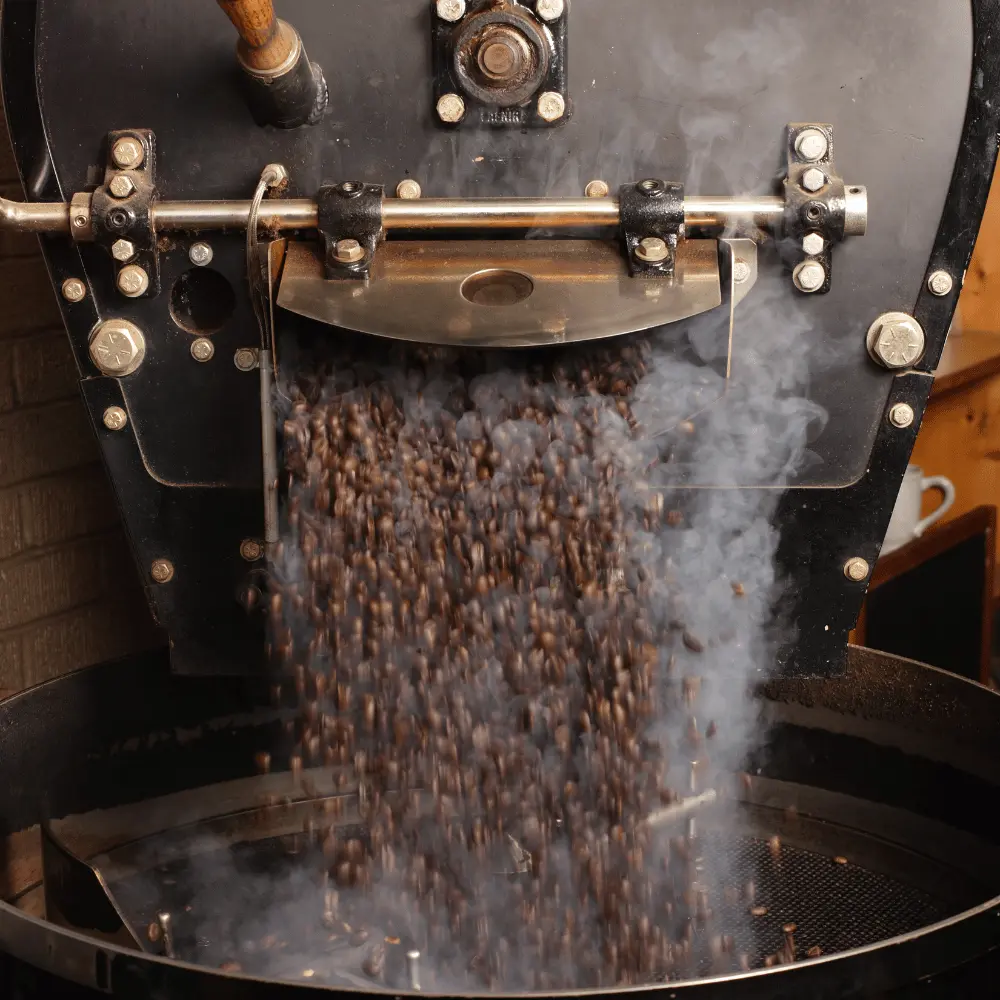Kapeng Barako, a gem from the Philippines, is a unique and exquisite coffee variety that has been delighting connoisseurs and casual drinkers alike for centuries. Often overshadowed by its more famous counterparts, Arabica and Robusta, this exceptional coffee stands tall in its own right with its bold, distinct flavor and rich heritage. In this comprehensive guide, we’ll explore the captivating world of this delectable type of coffee and uncover its fascinating history, undeniable charm, and secrets to brewing the perfect cup.
Embark on this journey with us as we dive deep into the vibrant coffee culture of the Philippines, where Kapeng Barako holds a special place in the hearts of locals and visitors alike. From the lush coffee plantations to the bustling streets of Manila, this delightful coffee has been a symbol of resilience, pride, and community. Whether you’re a coffee aficionado or simply curious about this intriguing brew, our guide will provide you with a wealth of knowledge to help you appreciate and savor every sip of this Philippine treasure.
So, without further ado, let’s begin our exploration of the extraordinary world of this exquisite coffee variant and discover why it truly deserves a spot in every coffee lover’s repertoire.
What is Barako Coffee?: Key Takeaway
- Kapeng Barako is a unique Philippine brew made from the rare Liberica beans, which account for only 2% of the world’s coffee production.
- The flavor profile of this type of coffee is characterized by bold, earthy, fruity, and nutty notes, setting it apart from other coffee types like Arabica and Robusta.
- This delectable coffee has a rich history in the Philippines, and its revival has led to increased recognition and support for local farmers, artisans, and communities.
- Modern brewing techniques such as French Press, Pour-Over, and Cold Brew are effective in extracting the best qualities from this type of coffee beans.
- Supporting these exquisite coffee variant producers and communities is essential for the sustainable growth and preservation of this valuable Philippine heritage.
- Sustainable coffee tourism in the Philippines can help promote this succulent coffee while contributing to local communities and responsible environmental practices.
- Some of the best Barako coffee brands include Gourmet Farms Barako Coffee, Kape Isla Barako Coffee, Cafe de Lipa, and Bo’s Coffee Barako Blend.
- Enjoying this distinctive type of coffee not only provides a remarkable coffee experience but also contributes to the preservation and promotion of the Philippines’ rich cultural heritage and unique coffee industry.
The History of Barako Coffee

This coffee’s captivating story is deeply rooted in the rich history and culture of the Philippines. To truly appreciate this unique brew, we must delve into its origins, cultural significance, and passionate efforts to revive its production and popularity.
Origins in the Philippines
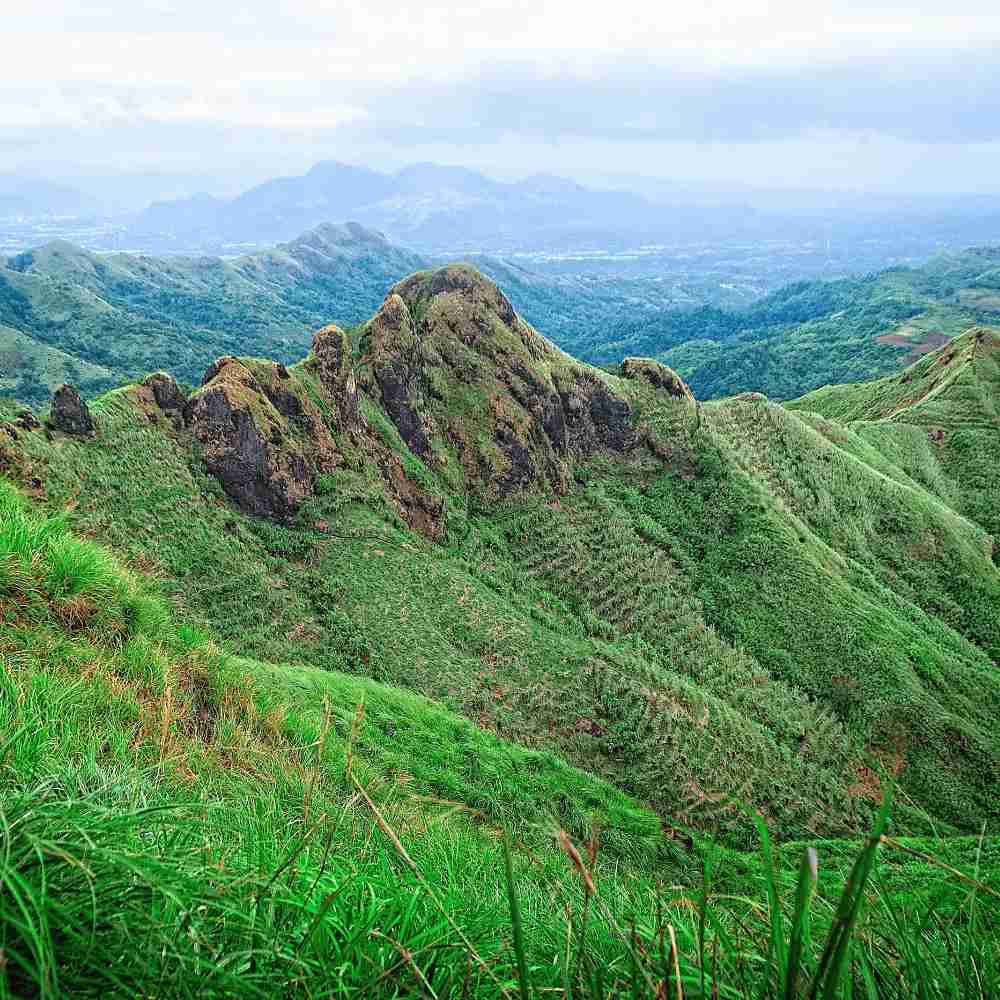
Barako coffee, also known as Kapeng Barako, is a coffee variant that belongs to the Coffea liberica species. However, it was during the Spanish colonization of the Philippines in the 17th century that Liberica beans found their way to the archipelago. As coffee cultivation thrived in the country, this delectable coffee emerged as one of the key players, primarily grown in the provinces of Batangas and Cavite.
The term Barako, originating from the linguistic repertoire of the Philippines, has a lexical denotation referring to a “stud,” which connotes a concretized conceptualization of masculinity within the cultural landscape. This coffee variant, characterized by a robust flavor profile and a highly aromatic essence reminiscent of aniseed, boasts of an unparalleled gustatory experience that titillates the sensory receptors with utmost efficacy, thereby rendering it a staple beverage choice for aficionados across the globe.
It is worth mentioning that the etymology of the term “Barako” is not confined to the local Philippine dialects only. Interestingly, it also has roots in the Spanish language, where it translates to “wild boar.” The reason for this lies in the fact that these animals are notorious for feasting on coffee cherries, thus unwittingly playing a pivotal role in the propagation of this iconic coffee variant. As time passed, the name Barako became synonymous with the coffee’s firm and bold flavor profile, capturing its unique character with unparalleled finesse. It is no wonder that this coffee variant has become a cult classic, with legions of fans extolling its virtues all around the world.
The Role of Barako Coffee in Philippine Culture
This type of coffee has played an integral role in Philippine culture, symbolizing the nation’s strength and resilience. The distinct flavor and aroma of this coffee have made it a staple in Filipino households and an essential part of daily life.
In the past, coffee breaks or “merienda” were a time for family members and friends to gather and enjoy each other’s company while sharing a cup of joe. Its powerful taste and invigorating aroma brought people together, forging bonds and creating cherished memories. The prevalence of Kapeng Barako in the Filipino lifestyle is a testament to the importance of this beverage as a cultural touchstone.
The Revival of Barako Coffee
Despite its historical significance, this delightful coffee variant faced challenges as global demand for Arabica and Robusta beans grew, pushing Liberica varieties to the sidelines. Additionally, the Philippines’ coffee industry faced a devastating decline during the mid-20th century due to the spread of coffee rust in the islands. (1)
However, in recent years, there has been a resurgence of interest in Kapeng Barako, fueled by passionate coffee enthusiasts, local farmers, and industry leaders. Initiatives such as the Philippine Coffee Board’s “Save the Barako” campaign and the establishment of coffee cooperatives have sought to raise awareness about this unique coffee, promote sustainable practices, and support local producers. (2)
These efforts have resulted in a renewed appreciation for this coffee variant, both locally and internationally, with a growing number of specialty cafes and shops offering this Philippine treasure to coffee connoisseurs and curious drinkers alike. This revival signifies a promising future for this coffee as it regains its rightful place in the world of coffee culture.
The Unique Characteristics of Barako Coffee
This coffee’s allure lies in its distinct flavor, aroma, and potential health benefits that set it apart from other coffee varieties. Let’s explore the fascinating characteristics of this delectable coffee that have captivated the hearts of coffee enthusiasts worldwide.
Liberica Beans: The Key to Barako’s Distinct Flavor

Liberica beans are the foundation of Barako coffee’s unique character. This coffee species accounts for less than 2% of the global coffee production, making it a rare and treasured variety. Liberica beans are larger and more irregularly shaped than their Arabica and Robusta counterparts, often exhibiting a unique “hooked” appearance.
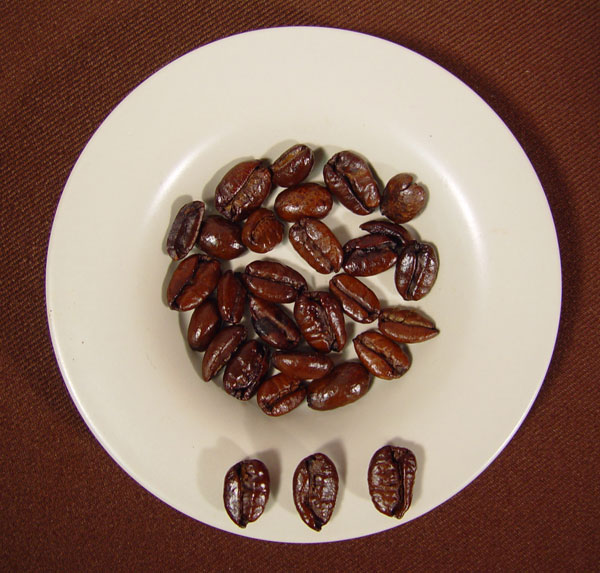
The Liberica plants are more resilient to pests and diseases, allowing them to thrive in the diverse climate of the Philippines. The combination of the beans’ distinct properties and the Philippine terroir gives birth to the unparalleled taste of this coffee variant.
The Flavor Profile of Barako Coffee
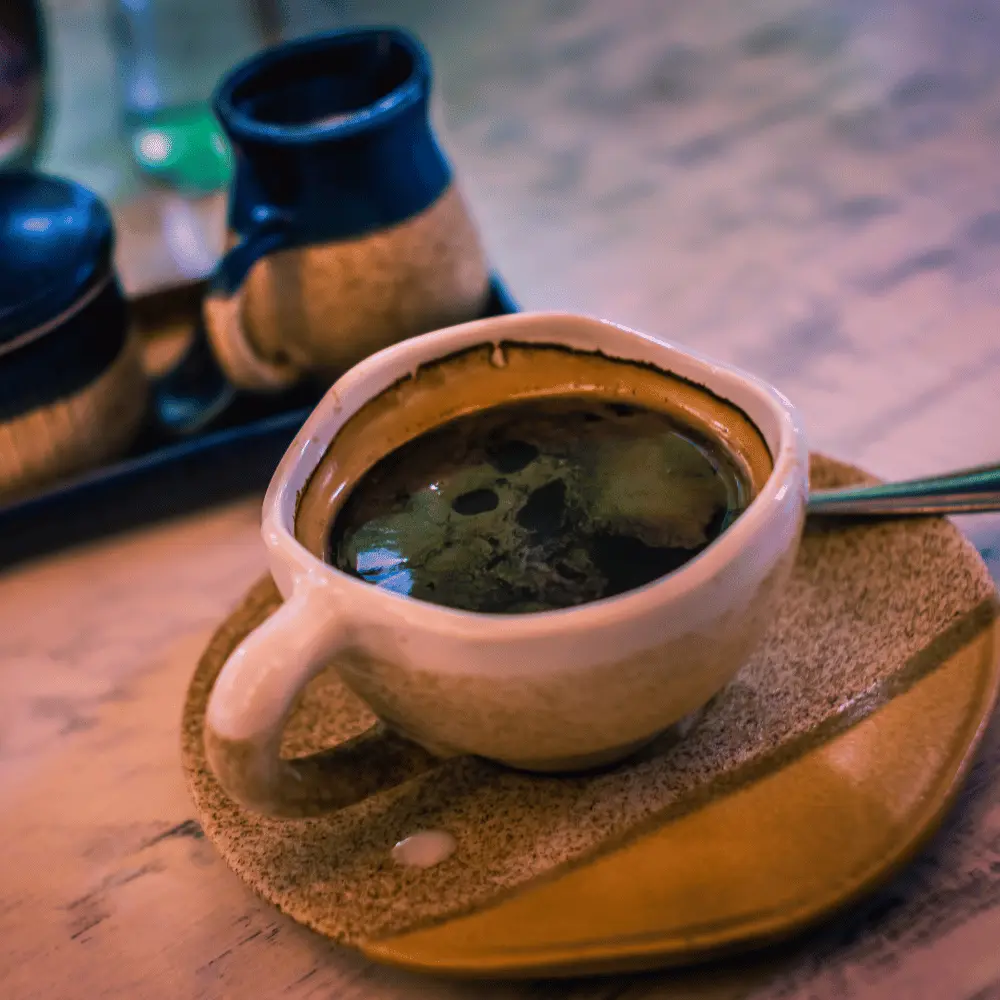
Barako coffee, an exquisite gem among coffee varieties, captivates taste buds with its robust, unapologetically potent, and singular flavor. Swirling within its taste spectrum, you’ll encounter a dense, terrene, and nut-infused foundation, punctuated by undercurrents of decadent dark chocolate, succulent ripe berries, and a whisper of exotic spices.
This coffee’s aroma is nothing short of spellbinding, as it transports you to the verdant Philippine archipelago with its intoxicating melange of floral and fruity essences. These multifarious flavors and aromas coalesce into an intricate, full-bodied coffee, leaving a delightful, enduring aftertaste that entices the most discerning of coffee connoisseurs.
Health Benefits of Barako Coffee
While the allure of this delightful type of coffee primarily lies in its gustatory and olfactory splendor, it harbors a treasure trove of potential health benefits. Sharing the spotlight with its coffee brethren, Kapeng Barako is teeming with antioxidants, offering a shield against the nefarious effects of free radicals and oxidative stress.
Laden with caffeine, Kapeng Barako’s content eclipses Arabica, but shyly retreats in comparison to the robust Robusta, striking a harmonious balance that rouses the senses without overwhelming them. Caffeine is renowned for its invigorating influence on the central nervous system, amplifying alertness, concentration, and physical prowess.
Research has hinted that moderate coffee indulgence may yield positive repercussions on various health facets, such as mitigating the risk of chronic diseases and sharpening cognitive acuity. Nevertheless, it is of paramount importance to exercise restraint in consuming this type of coffee, for overindulgence may unleash untoward health repercussions. (3)
In essence, Barako coffee’s unparalleled characteristics, from its labyrinthine flavor profile to its potential health-enhancing properties, render it a truly extraordinary and irresistible elixir that no coffee aficionado should overlook.
Growing and Processing Barako Coffee
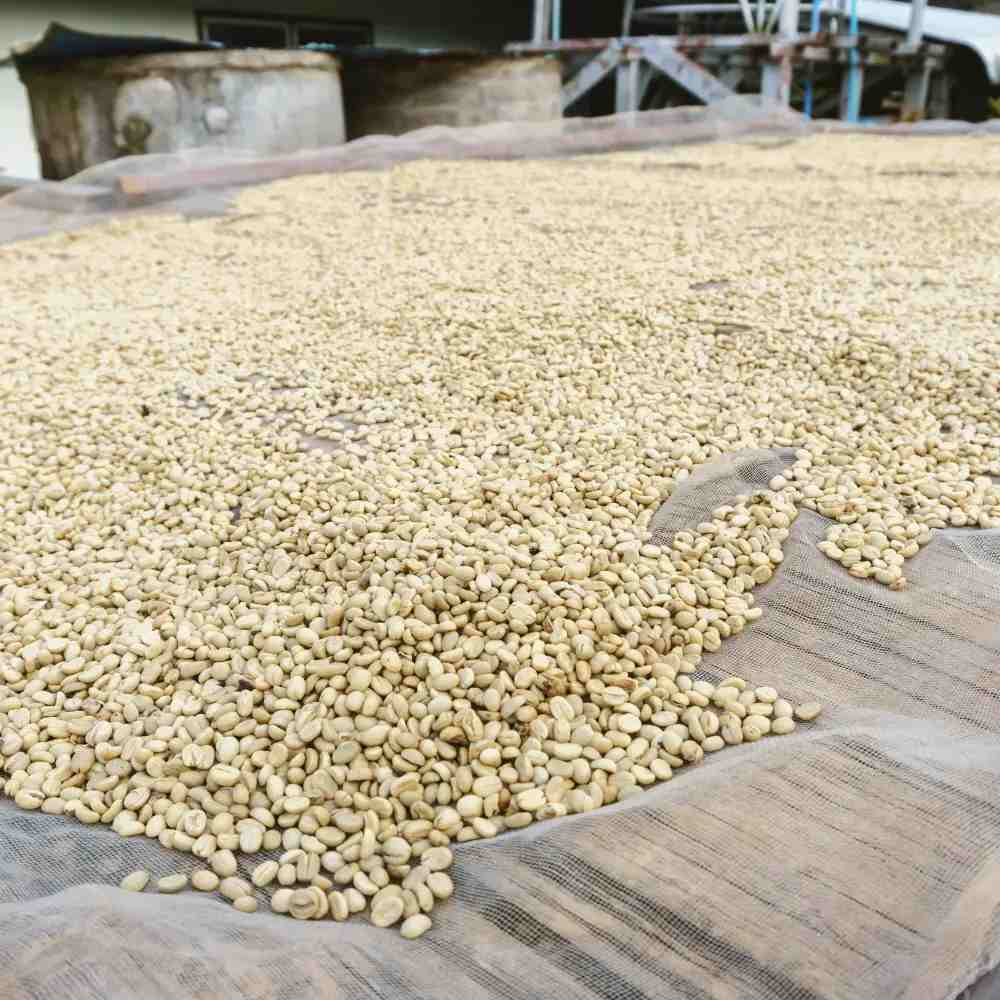
Imbibing this distinctive type of coffee becomes a more profound experience when one grasps the devotion and mastery involved in nurturing and refining these valuable beans. Let us embark on an odyssey through Barako coffee’s metamorphosis from germination to elixir, highlighting the significance of eco-friendly and ethical methodologies in its creation.
Cultivating Barako Coffee Trees
The rich tapestry of the Philippine landscape, especially within the verdant provinces of Batangas and Cavite, provides a nurturing haven for these coffee variant trees to flourish. This fertile terrain presents optimal climatic and soil conditions for the growth of the cherished Liberica beans.
Barako coffee trees are accustomed to lower altitudes than their Arabica counterparts, thriving between 300 and 800 meters above sea level. These resilient trees possess inherent resistance to maladies and pests, allowing them to prosper within the Philippines’ tropical embrace.
The meticulous rearing of these coffee trees necessitates unwavering care and vigilance. Farmers employ an array of techniques to safeguard the vitality and fecundity of their plantations, such as skillful pruning, judicious watering, and the integration of organic fertilizers to preserve soil fertility.
Harvesting and Processing the Beans

The extraction of Barako coffee beans is an intricate and laborious endeavor, demanding finesse and exactitude. Farmers meticulously handpick the beans, guaranteeing that solely the ripest cherries are chosen. This scrupulous technique underpins the caliber and uniformity of the ultimate brew.
Post-harvest, coffee cherries commence their transformative journey, involving pulping and desiccation. For this coffee variant, the prevalent method is the natural, or dry process, where sun-drenched cherries surrender their moisture. This technique imparts the beans with their signature taste and aroma, accentuating the earthy and fruity nuances.
Upon reaching optimal moisture levels, the beans undergo hulling, stripping away their outer parchment layer. Following this, beans are sorted, classified, and packaged for storage or conveyance to roasters and coffee establishments.
Ensuring Sustainable and Ethical Practices
The burgeoning global appetite for Barako coffee has spotlighted the imperative of embracing sustainable and ethical production practices. This encompasses bolstering local farmers, fostering biodiversity, and attenuating ecological footprints.
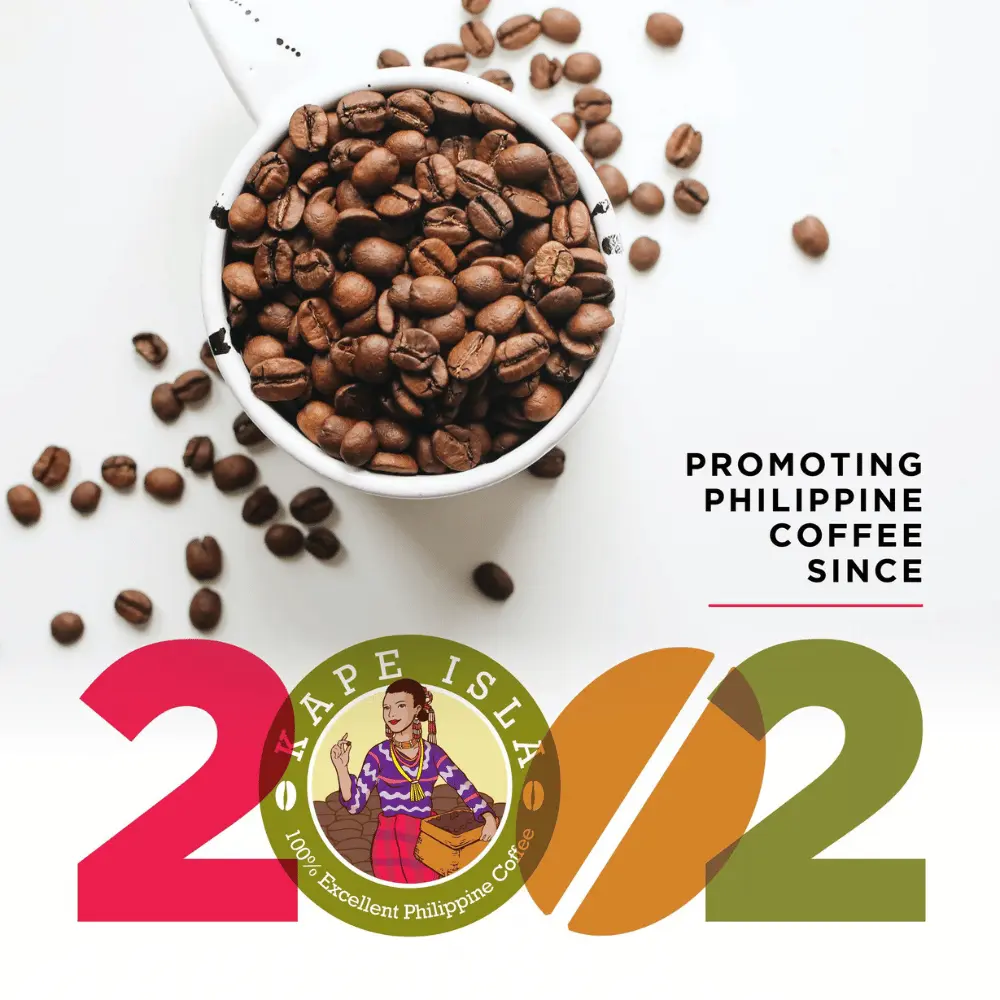
Entities such as the Philippine Coffee Board and coffee cooperatives strive to enrich the lives of these coffee variant cultivators by proffering education, resources, and improved market access. These endeavors ensure fair remuneration for farmers’ efforts and perpetuate the legacy of this type of coffee cultivation for posterity.
Moreover, eco-conscious agricultural techniques, including shade-grown coffee cultivation, intercropping, and the deployment of organic fertilizers, facilitate the conservation of robust ecosystems and safeguard the distinctive landscapes nurturing these coffee trees.
By endorsing these sustainable and ethical practices, we contribute to the preservation and flourishing of this distinctive type of coffee industry, securing this exceptional elixir’s place as a symbol of pride and delight for both the Philippines and coffee enthusiasts worldwide.
Best Barako Coffee Brands

Discovering and supporting exceptional Barako coffee brands is an excellent way to enjoy this unique brew while contributing to the growth of the industry. To help you find the best coffee on the market, we’ve compiled a list of notable brands that prioritize quality, sustainability, and ethical practices.
Gourmet Farms Baraco Coffee: A pioneer in the Philippine coffee industry, Gourmet Farms is committed to providing high-quality, sustainably-grown coffee. Their beans are carefully selected and roasted to preserve the distinctive flavors and aromas of this exceptional brew.
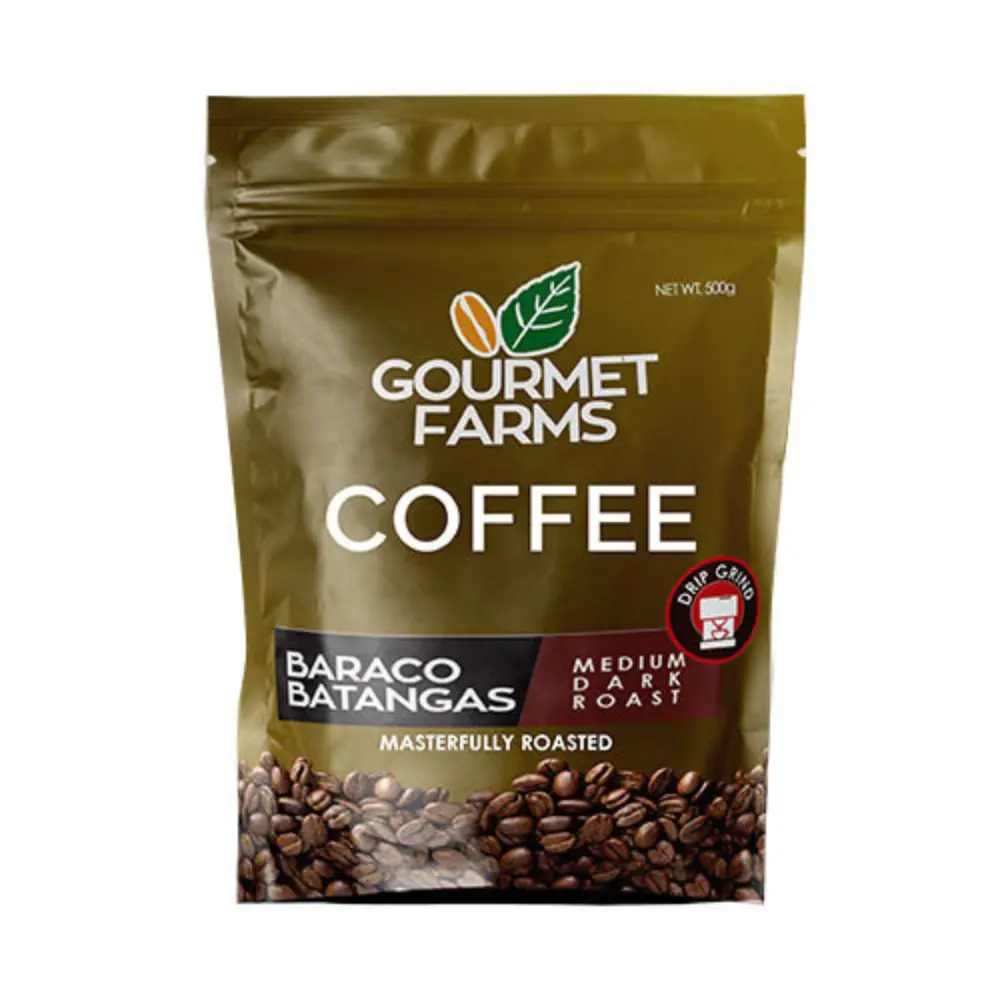
Kape Isla Barako Coffee: Kape Isla is an initiative of the Philippine Coffee Board, focused on promoting locally-grown coffee, including Barako. Their beans are sourced directly from farmers in Batangas and Cavite, ensuring traceability and supporting the communities that produce this unique coffee.
Figaro Coffee Company Barako Blend: Figaro Coffee Company is a popular Philippine coffee chain that offers its own Barako blend. This blend combines the robust flavors of Barako coffee with other high-quality beans, creating a balanced and flavorful cup. Figaro is also committed to supporting local farmers through its foundation, which provides training and resources to coffee-growing communities.
Cafe de Lipa: Cafe de Lipa offers authentic Baraco coffee sourced from local farms in Batangas. With a focus on quality and sustainability, their coffee beans are handpicked, sun-dried, and roasted to perfection, showcasing the best of Philippine coffee.
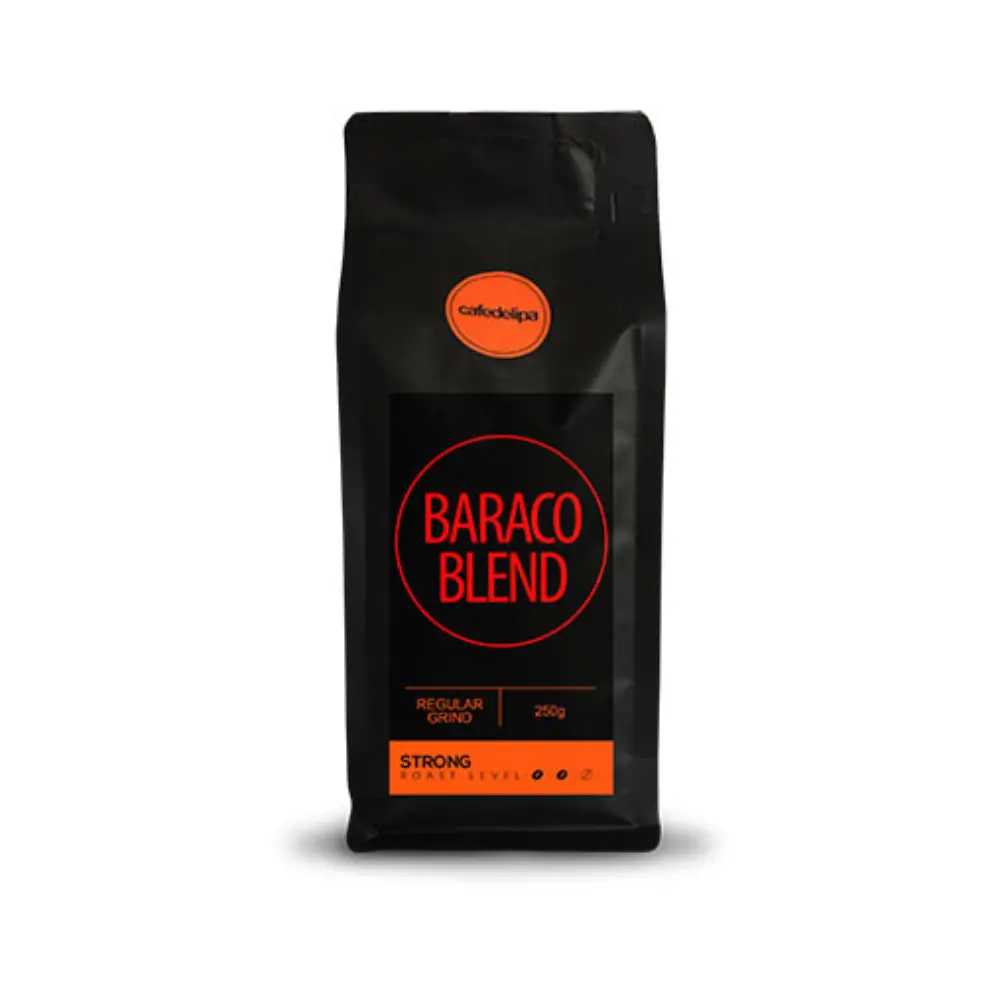
Bo’s Coffee Barako Blend: Bo’s Coffee is another well-known Philippine coffee chain that offers a Barako blend. This blend features the bold and distinct flavors of Barako coffee combined with other high-quality beans. Bo’s Coffee is dedicated to supporting local farmers and promoting Philippine coffee through its various initiatives.

Other Kapeng Barako Coffee Brands
Brewing the Perfect Cup of Barako Coffee

To truly savor the unparalleled flavors and aromas of this delightful coffee, it is vital to brew it with exactitude and finesse. Let’s delve into the world of modern brewing techniques and discover delectable pairings to elevate your coffee escapade.
Modern Brewing Techniques for Barako Coffee
State-of-the-art coffee apparatuses can yield a remarkable cup of joe. Some favored brewing techniques that harmonize with Kapeng Barako coffee include:
French Press: The comprehensive immersion brewing process of the French press coffee maker accentuates the audacious and intricate flavors of this delectable coffee variant. Employ a coarse grind and a brewing duration of 4 to 5 minutes for optimal results.
Pour-Over: The pour-over method, utilizing a Chemex or V60 dripper, grants superior control over the brewing process. Use a medium grind and a brewing time of 2 to 3 minutes for ideal extraction.
Cold Brew: Cold brewing conjures a velvety, low-acid concoction with a gentle sweetness. Steep coarsely ground coffee in cold water for 12 to 24 hours, then strain and relish over ice.
The customary preparation method for Barako involves serving it either black or with a liberal dose of muscovado sugar, which adds an extra layer of complexity to the coffee’s already intricate flavor profile. This versatile coffee variant is not only limited to these traditional brewing methods but also serves as an excellent base for crafting espresso and a plethora of other espresso-based beverages, all of which showcase the coffee’s diverse and multifaceted character.
Best Pairings with Barako Coffee

To heighten your coffee escapade, contemplate coupling it with edibles that enhance its bold flavor and opulent aroma. Some delightful pairings encompass:
Filipino pastries: Conventional Filipino pastries, such as “Ensaymada” (sweet brioche with grated cheese) and “Pandesal” (Filipino bread rolls), are exceptional choices that accentuate the earthy and fruity notes of this type of coffee.
Dark chocolate: The potent flavor of dark chocolate melds seamlessly with the nutty and chocolatey undertones of Kapeng Barako, forging a harmonious and sumptuous experience.
Cheese: The richness of the cheese, particularly matured varieties, complements the bold flavor of this delightful coffee and introduces a savory component to your coffee interlude.
Experimentation with diverse brewing methods and pairings can aid you in discovering your preferred mode of this delectable coffee enjoyment, empowering you to cherish this unique and mesmerizing brew to the utmost.
Supporting Barako Coffee Producers and Communities
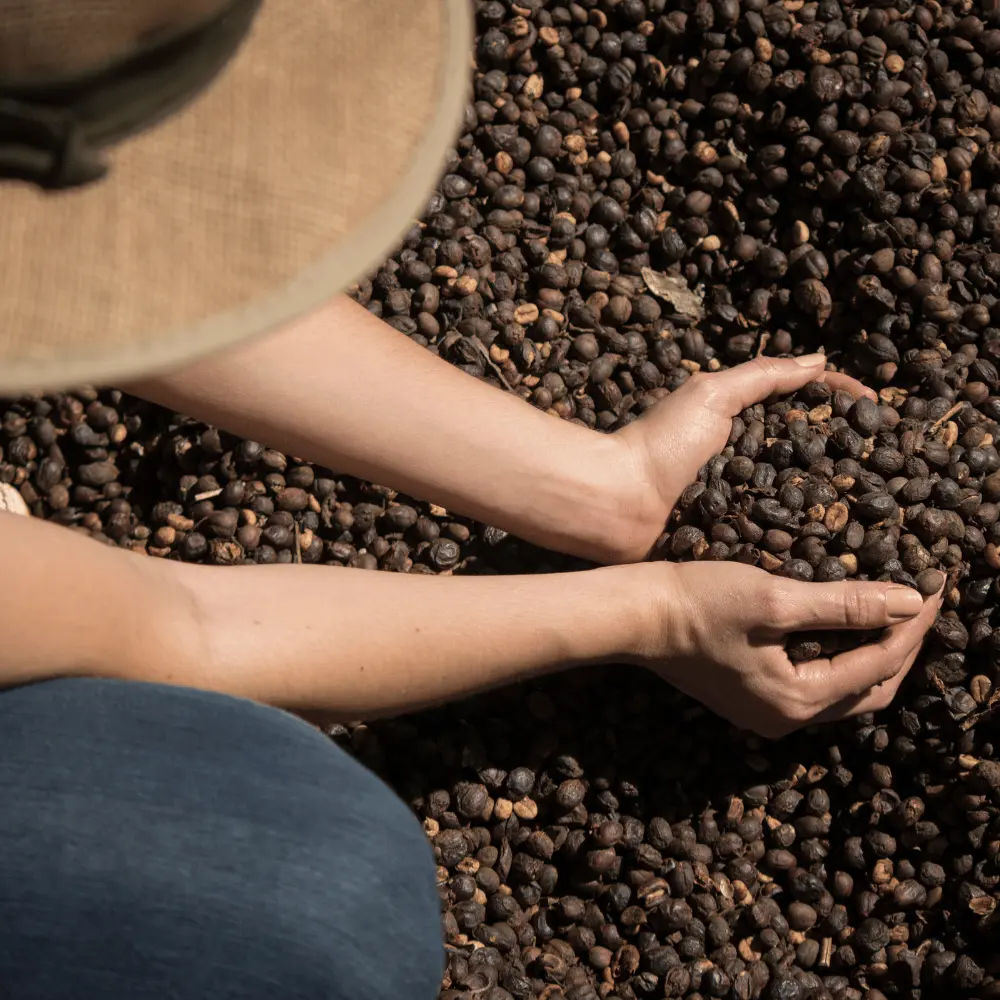
The renaissance of this distinctive coffee is not only about savoring its unique taste but also about supporting the farmers, artisans, and communities that cultivate and preserve this valuable Philippine heritage. By recognizing the people behind the coffee, promoting sustainable tourism, and purchasing authentic coffee, we can contribute to the growth and success of the Barako coffee industry.
Recognizing the Artisans Behind Barako Coffee
Behind every cup of joe are the dedicated farmers, processors, and roasters who work tirelessly to bring out the best in every bean. Recognizing and celebrating their craftsmanship is an essential part of supporting Barako coffee.
Local cooperatives, such as the Philippine Coffee Board and the Association of Filipino Coffee Growers, are working to improve the livelihoods of these coffee variant farmers by providing training, resources, and access to better market opportunities. By supporting these organizations and initiatives, we can help ensure that the artisans behind this delectable type of coffee receive fair compensation for their labor and are able to continue cultivating this unique brew for future generations.
Sustainable Coffee Tourism in the Philippines
Coffee tourism offers an excellent opportunity to learn more about the cultivation and production of Kapeng Barako while supporting local communities. Many coffee farms in the Philippines, particularly in Batangas and Cavite, now offer tours and workshops that showcase the growing, harvesting, and processing of this coffee variant.

When participating in coffee tourism, it is important to choose experiences that prioritize sustainability and promote responsible practices. Look for tours that support local communities, and minimize environmental impacts.
How to Buy Authentic Barako Coffee
Purchasing authentic Barako coffee not only ensures that you are enjoying the genuine taste of this unique brew but also supports the farmers and communities that produce it. When buying this type of coffee, consider the following tips:
Look for traceability: Choose coffee that provides information about its origin, such as the region or farm where it was grown. This helps ensure that the coffee is authentic and supports local producers.
Buy from reputable sources: Purchase coffee from specialty coffee shops, local farmers’ markets, or directly from coffee cooperatives to ensure that you are getting a high-quality product and supporting this coffee community.
Choose sustainable and ethical brands: Look for coffee brands prioritizing sustainable and ethical practices, such as fair trade certification or organic farming methods. This helps ensure that your purchase supports the well-being of both the environment and the people involved in the production of the coffee.
Conclusion
In summation, Barako coffee serves as an emblem of the abundant cultural legacy and varied landscapes of the Philippines. With its daring flavor, enthralling aroma, and unparalleled attributes, it has captivated the hearts of coffee aficionados worldwide. Comprehending its history, cultivation, brewing techniques, and the communities that engender it, we can genuinely appreciate the ardor and artisanship imbued in every cup of this extraordinary elixir. As we relish the enchanting taste of this distinctive type of coffee, let us also bear in mind to endorse the farmers, artisans, and organizations that labor unceasingly to preserve and propagate this invaluable Philippine gem. By doing so, we not only indulge in an exceptional coffee journey but also contribute to the sustainable development and triumph of this coffee industry for future generations.
FAQ
How Can One Identify Authentic Barako Coffee Beans?
Authentic Kapeng Barako coffee beans can be identified by their larger size, irregular shape, and distinctive aroma. When purchasing this coffee variant, look for traceability information about the origin, such as the region or farm where it was grown. Buying from reputable sources, such as specialty coffee shops, local farmers' markets, or directly from coffee cooperatives, will also help ensure that you are getting the best quality.
How Does Barako Coffee Production Contribute to Local Communities in the Philippines?
This coffee production contributes to local communities in the Philippines by providing income and employment opportunities for farmers, processors, and roasters. Organizations such as the Philippine Coffee Board and coffee cooperatives work to improve the livelihoods of farmers by providing education, resources, and access to better market opportunities. Supporting this delectable type of coffee production also helps preserve a valuable cultural heritage and promotes sustainable agricultural practices.
What Steps Can Consumers Take to Support Barako Coffee Producers?
Consumers can support producers by purchasing authentic Kapeng Barako from reputable sources, choosing sustainable and ethical brands, and participating in sustainable coffee tourism. Additionally, spreading awareness about the unique qualities of this coffee and the importance of supporting local producers can help increase demand and ensure the continued growth and success of the industry.











